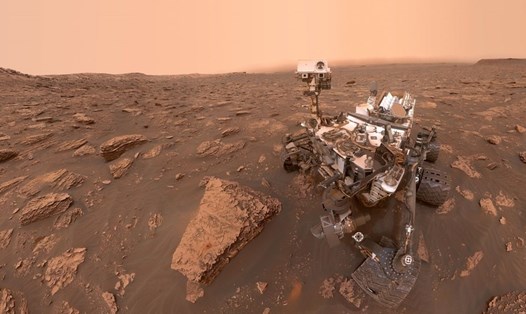Researchers at Washington State University (WSU), USA, have contributed to building the way to the Moon thanks to an advanced cleaning technique.
Accordingly, the research team discovered that a liquid nitrate spray can help remove almost all of the Moon's dust from the crew.
This could solve an important problem for future lunar landing missions.
The followed by the moon dust journey
People have reached the Moon, but to build a human base here, there are some dust problems that need to be solved. Moon dust sticks to everything on its surface and is difficult to clean up.
Worse, lunar dust is made up of micro-particles, making them stick to it that can easily damage machinery and spacecraft systems.
Ian Wells, a final year student majoring in Mechanical Engineering and Materials at WSU and first author of the paper, explained that lunar dust is stored in electricity, eroded and can penetrate anywhere, making it difficult to handle. At the very least, the last astronauts could be covered with a smooth plastic coating.
According to EurekAlert!, the astronauts used a brush to dry dust from their space attire during six Apollo crew missions to the moon in the 1960s and early 1970s; however, it did not work very well. The dust particles are eroded and can be actively small, which can enter the engine and electronic device.
Wells notes that the moon dust causes problems for lunar missions, especially for astronauts when they return home.
Expensive items could become useless and space travelers could even get sick. Experts believe that prolonged exposure to moon dust can cause lung damage equivalent to Black Lung Disease.
By 2025, NASA hopes to bring the first woman and the first person of color to the Moon through the Artemis mission, with the ultimate goal of establishing a base there to explore planets further away. Therefore, this agency is very interested in solving the problem of moon dust.
How will liquid nitrate spray help?
In a study titled "Removing Moon dust and the deterioration of matter from liquid Nition foam sprays" published in the journal Acta Astronautica, researchers said that liquid Nition foam sprays removed 98% of the Moon dust simulator in the vacuum environment with minimal damage. It also works better than any previously studied cleaning technique.
Wells notes that liquid nitrates are abundant on Earth and can play a big role as a simple cleanser, such as cleaning out space clothes.
WSU researchers also note that loose nayterns clean outfit very gently, while a simple towel can damage the outfit. According to calculations, it will take about 75 cycles of liquid nitrate spraying before damage to the outfit occurs.
The study received funding from NASA after winning the Breakthrough, Creativity and Game Change (BIG) Challenge. The team is currently working on a model to test complex interactions between dust particles and liquid nitrates to see how it can work.







